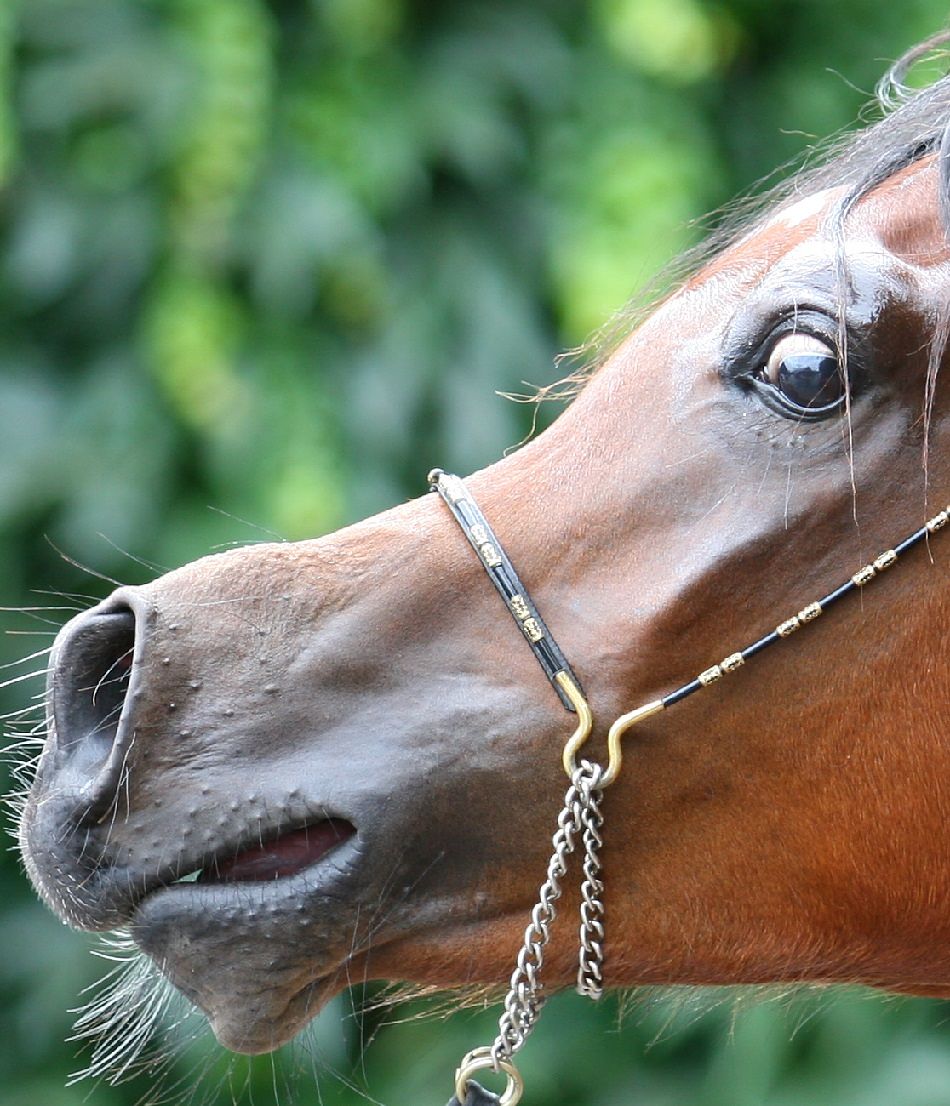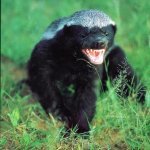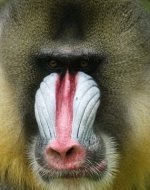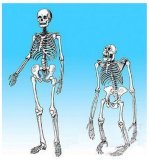horse Facts
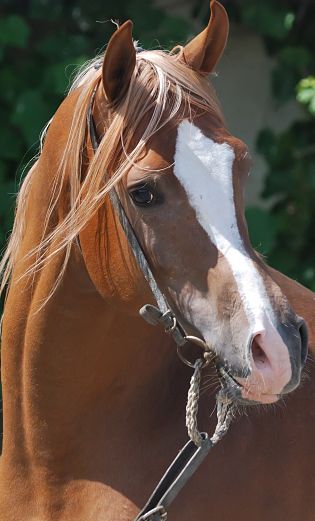 Portrait of a Horse
Portrait of a HorseOne of the more famous horse facts is that you can approximate a horses age by looking at its teeth, which is where the saying "don't look a gift horse in the mouth" comes from. The courageous and beautiful horse was domesticated in Asia over 5,000 years ago in the area now occupied by the country of Kazakhstan.
They were most likely originally kept for their meat, but skeletal remains from 3,500 B.C. suggest evidence of bit use, and by 2,000 B.C. they were pulling sleds and chariots throughout Asia and Europe.
But consider that 5,000 years ago the horse was a herbivorous, nomadic, herd animal, no doubt preyed upon by large predators such as wolves.
Specifically designed for flight, not fight, the horse has large eyes that can pick up the movement of a predator in a 350 degree field of vision, and powerful legs and hearts to power them away from whatever should persue them.
This is the primary instinctual behavior, so vital for the very survival of the horse, yet in domestication, they somehow completely suppress these basic drives.
While "courageous" may not be the first word that comes to mind when contemplating the horse, consider what Nelson Mandela once said, that courage was not the absence of fear, but the triumph over it.
Try to imagine the history of mankind without the horse. Romans with no chariots, cowboys with no broncos, knights with no chargers, the cavalry arriving on foot.
No other animal has so changed the course of human history, and through domestication, we have changed the horse, There are over 350 breeds of horses in the world today, from the beautiful little Fallabella, only 32 inches tall, to the massive Shire, which can be 10 feet tall at the top of the head. But size is really the only great variable.
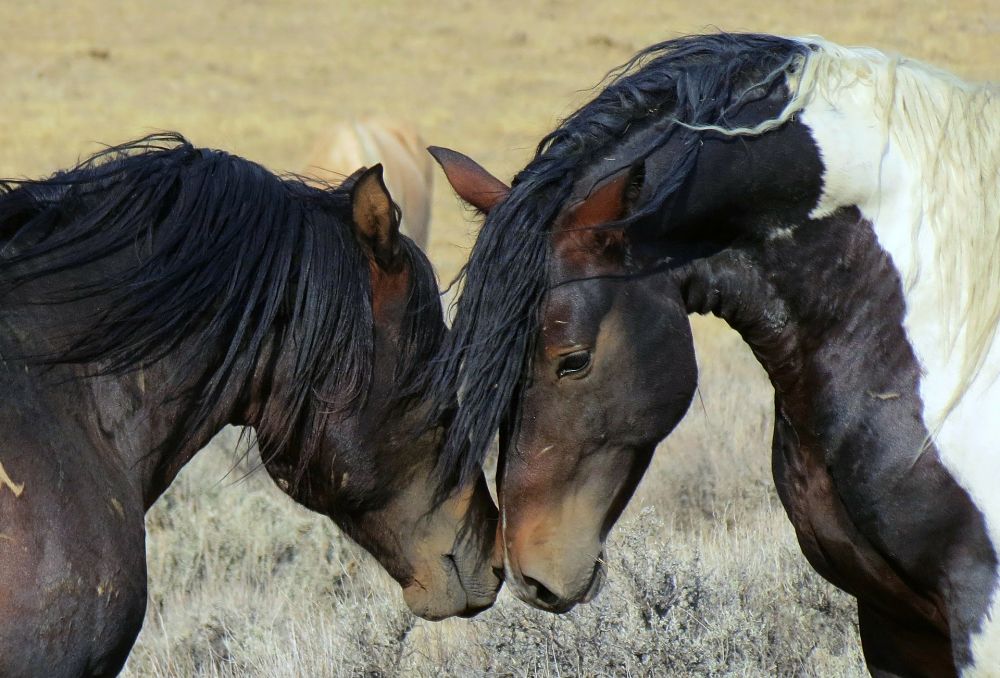 Mustang greeting
Mustang greetingUnlike domestic dogs, and to a lesser extent domestic cats, domestic horses do not display much variety in coat type, body shape or skull structure.
There are approximately 60 million horses in the world today, most still being used in some capacity that is not unlike their original jobs pulling small carts for business or transportation in hundreds of villages and towns.
They are employed as police horses as well, patrolling crowded cities and busy events, enforcing crowd control and diffusing riots. They have been trained to race, jump, and even herd other animals. And they are kept as pets and companions by millions.
There is an entire vocabulary devoted to the domestic horse. For instance, the height of a horse is measured from the floor to the top of the shoulders, which are called the withers, but they aren't measured in feet or centimeters, they are measured in a special unit called a hand. A hand is a unit of measurement initially equal to the width of the palm, that today equals 4 inches. So a typical horse stands about 15 hands 3 inches, or 15.3 hh, or 63 inches tall. A pony is a horse that is under 14.2 hh.
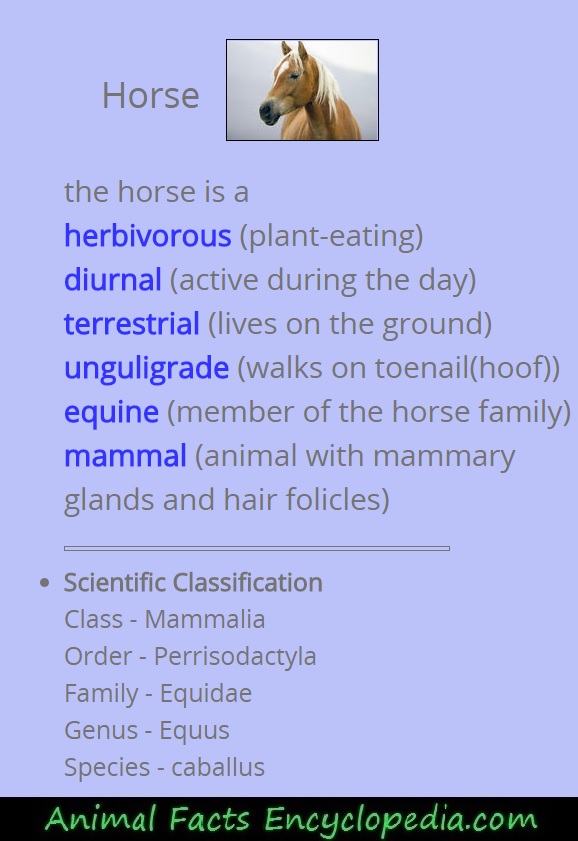
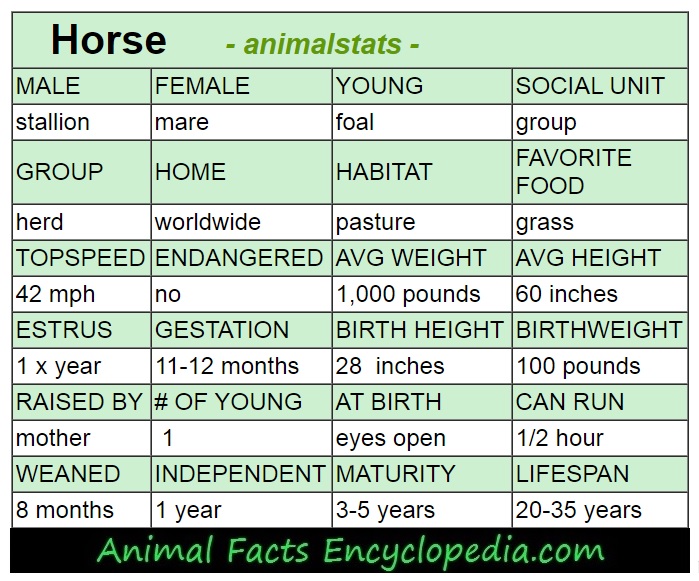
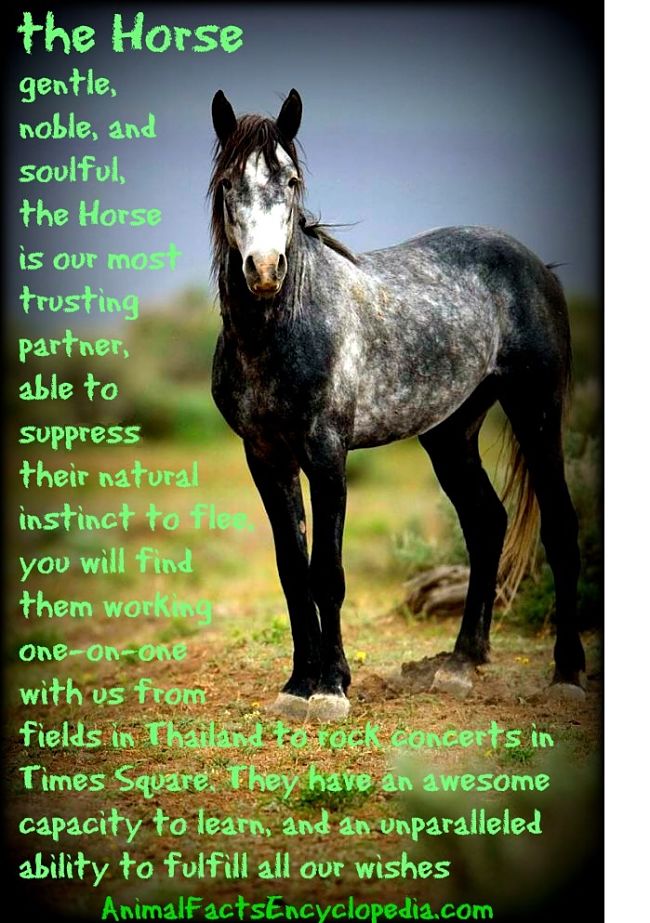
horse lifestyle
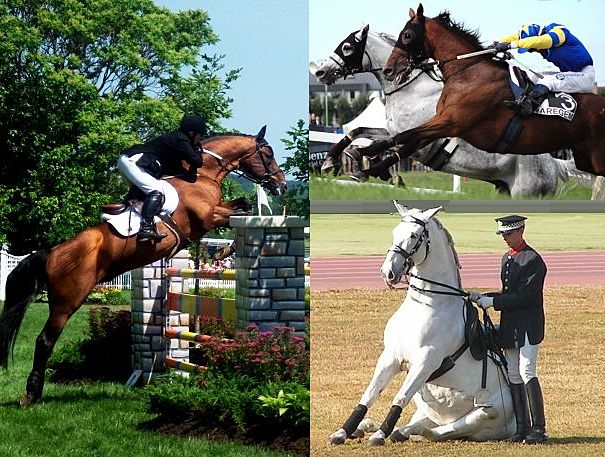
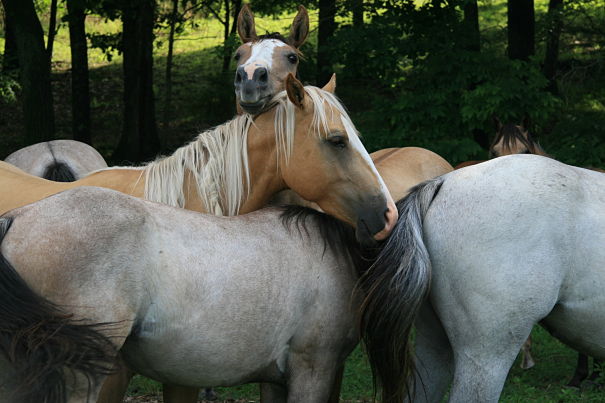
The horse is a large, agile herbivore with muscular shoulders and hindquarters, a long, powerful neck, and a tapered head. The body is covered with short fur, and there is a long mane of hair growing down the crest of the neck, as well as very long hair growing from an otherwise relatively short tail.
The nostrils are large and flexible, and the well-developed lips are some-what prehensile, able to select individual kernels of grain with precision. The ears are big, pointed and expressive. They can swivel in any direction, can be laid flat back against the neck when angry or agitated, and can be allowed to flop when relaxed or acting silly.
Horses have large hearts and impressive lung capacity and are one of the fastest land animals in the world, able to reach speeds of over 40 miles an hour - remember, by the way, that top speeds recorded are of racehorses that have a human being and a saddle on their back weighing over 100 pounds.
The modern horse descended from two types of wild horse, the tarpan, also known as the Eurasian horse, which became extinct in the late 1800's, and the Przewalski horse, which still exists in very small numbers in Mongolia. The Przewalski horse is a true wild horse that has never been domesticated.
Other horses considered to be "wild", like the mustang, are actually feral horses descended from once domesticated stock. The lifestyle of the mustang, however, probably best represents how domesticated horses live in nature.
They live either in bachelor herds, or herds of mares and foals, escorted by one, and occasionally two stallions. The majority of decisions as far as when to rest, visit the watering hole, move to a different pasture, etc. are made by senior mares, who will lead the way, while the stallion follows at the rear.
They are extremely social creatures who are nomadic in habit, moving constantly in search of fertile grassland. They spend time in close contact with eachother, often draping their necks over one another, or resting their muzzles on eachother. They may stand or walk with shoulders or hips touching, groom and nuzzle eachother, and engage in a variety of soft vocalizations.
Horses greet each other by touching muzzles and breathing into each others' nostrils.
Horses communicate with very subtle body language, and actually have very expressive faces showing emotion and mood through ear position, nostrils flaring, lip pursing and even the angle of their eyebrows. They pick up all these tiny gestures with ease, and their ability to understand so many signals, has made them remarkably trainable. Horses can pick up signals from humans on the ground, and on their backs that elicit complex actions.
The horse is designed for life out on open grasslands. As they graze with their heads down, they can see 350 degrees around them, from between their legs, and are always poised to flee, sometimes at the slightest detected movement. They can even sleep standing up, ready to run.
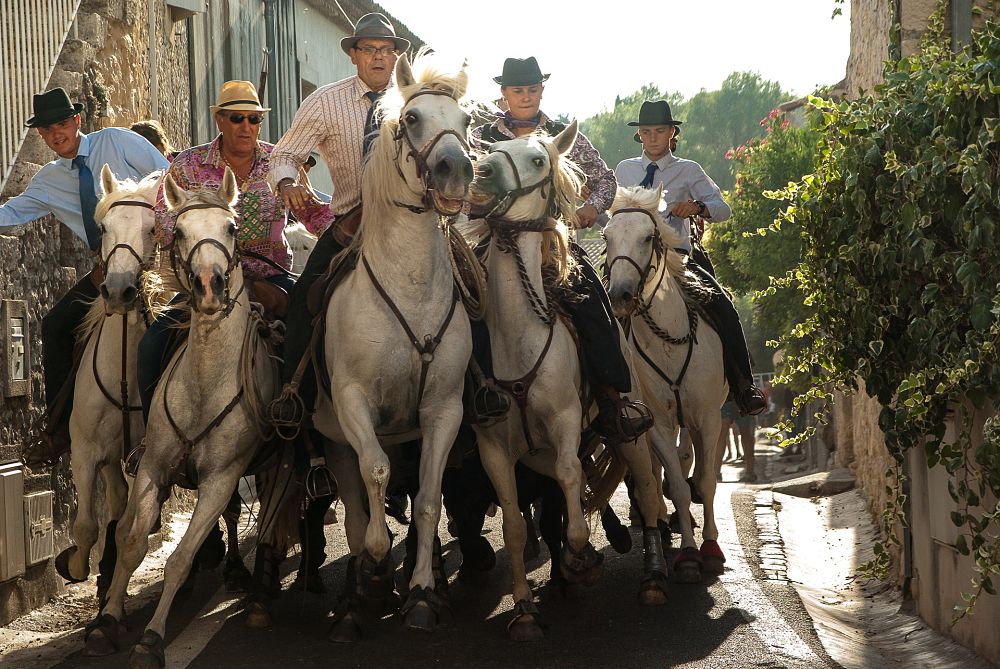 beaver!
beaver!horse facts on reproduction
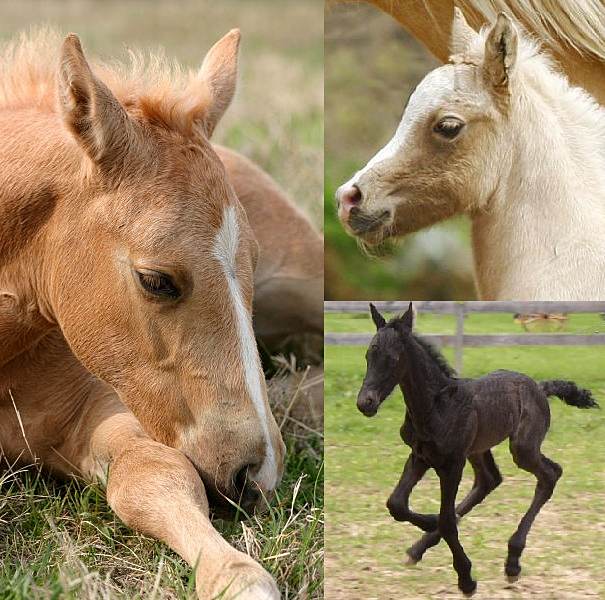
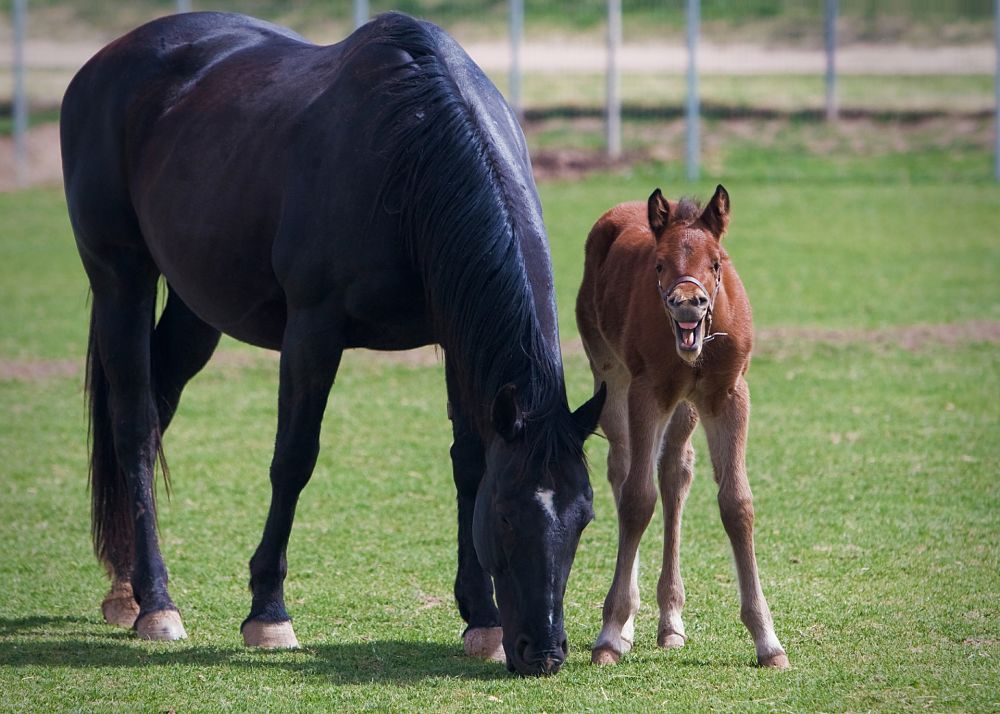 mare and tired foal
mare and tired foalWild horses live in three distinct herd types. The first is a family group composed of a stallion, several mares, and their offspring. Young females will often remain with their family, while young males will be driven out of the herd by the stallion as they reach maturity, usually at between 2 and 4 years of age.
The second group type is the bachelor herd, which is a group of males that are either too young, too old or not bold enough to establish their own herd.
And the third and least common group is a mix of juveniles under 4 years old.
Mares have a distinct hierarchy, and their relationships may remain stable for many years, as stallions come and go, battling eachother for the right to escort the herd.
The female is pregnant for about a year and gives birth to a single baby, called a foal. Twins are extremely rare. The newborn horse can stand within minutes, and can run in less than half an hour. They are weaned at about 8 months.
If the foal in question is a thoroughbred racehorse, training begins right away, and the horses you see on the racetrack may be as young as 2 years old. The horses that compete for the Kentucky Derby and the Triple Crown are only 3 years old, and a horse that is still racing at 8 years old is a rarity.
When it comes to the show ring though, most Grand Prix jumpers don't reach their prime until their 10th birthday, and may compete well into their late teens.
When you see the amazing white Lipizzan stallions perform, they are all at least 12 years old, for two reasons. First, they are actually born solid black and takes them about 10 years to slowly turn snow white, and second, it takes them that long to master all the incredible balletic movements they are famous for..
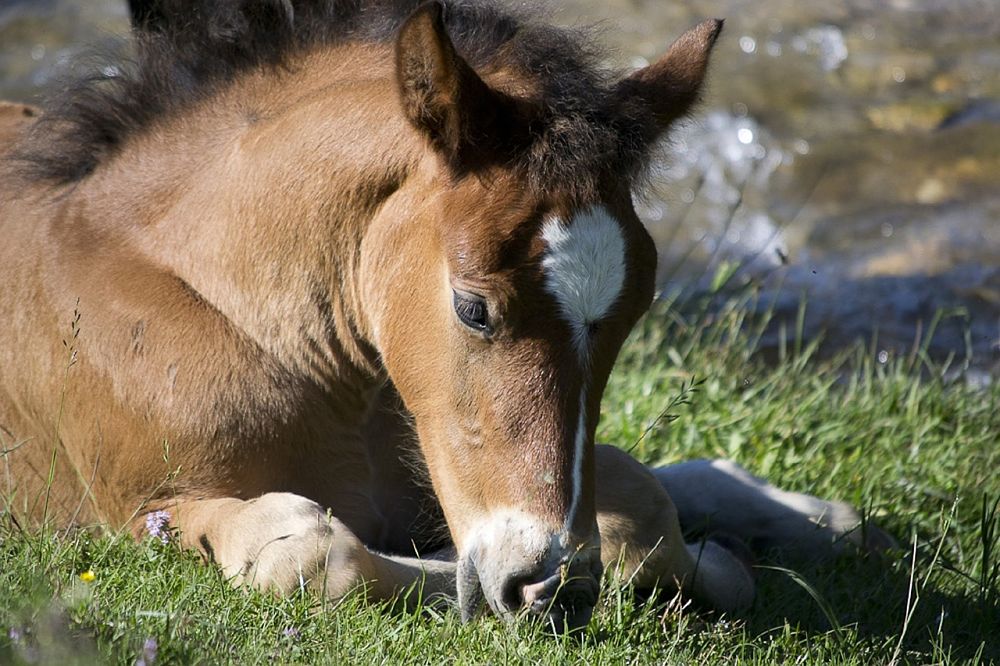 gorgeous filly
gorgeous filly
the mighty pony
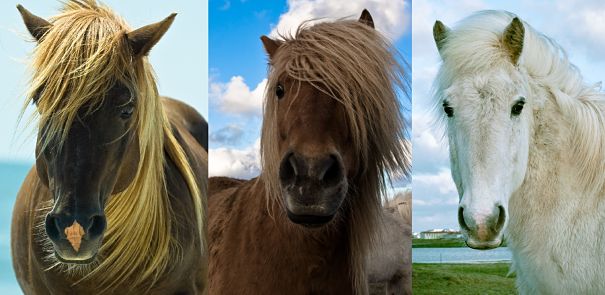
Although a pony is described as a horse under a certain height, ponies often seem like another species altogether. The brain power of the mighty pony is legendary.
Ponies are far more likely to pick a lock, raid the grain bin or lead the herd on a flower bed raid than their full size horse cousins, and in barns with both full size horses and tiny ponies, its the ponies who will often rule the roost, especially when the bigger folks are of the super size draft variety.
An ancient Scottish limerick tells of a Fell and Dale pony with a hangover from eating soured bran mash, outwitting an entire pasture full of Clydesdale's to get to their hay, and many lucky children will tell you that big brains do indeed come in these small packages!
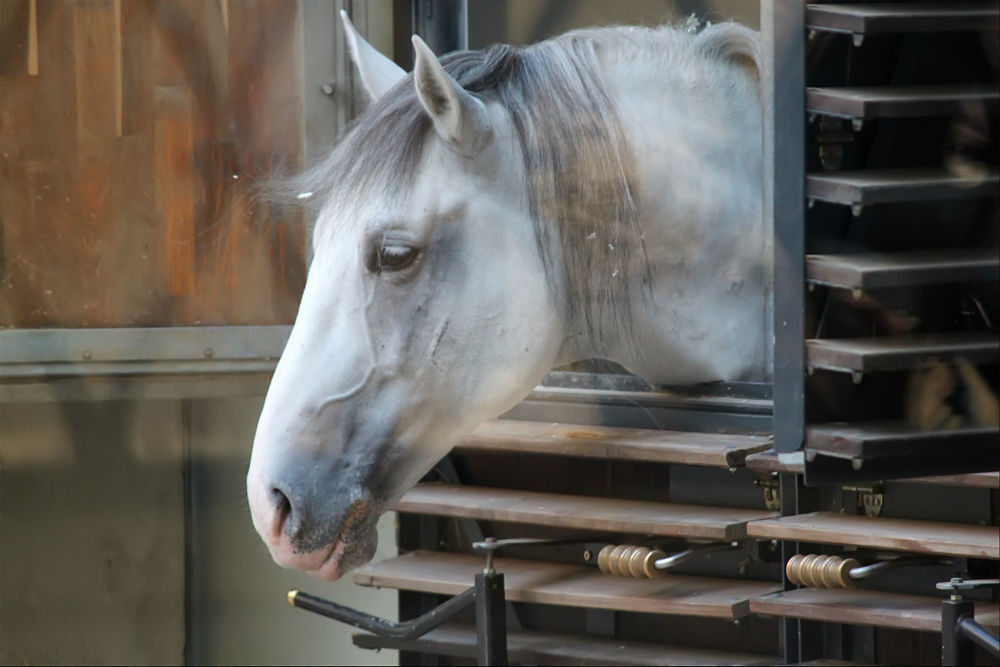
a few more horse facts
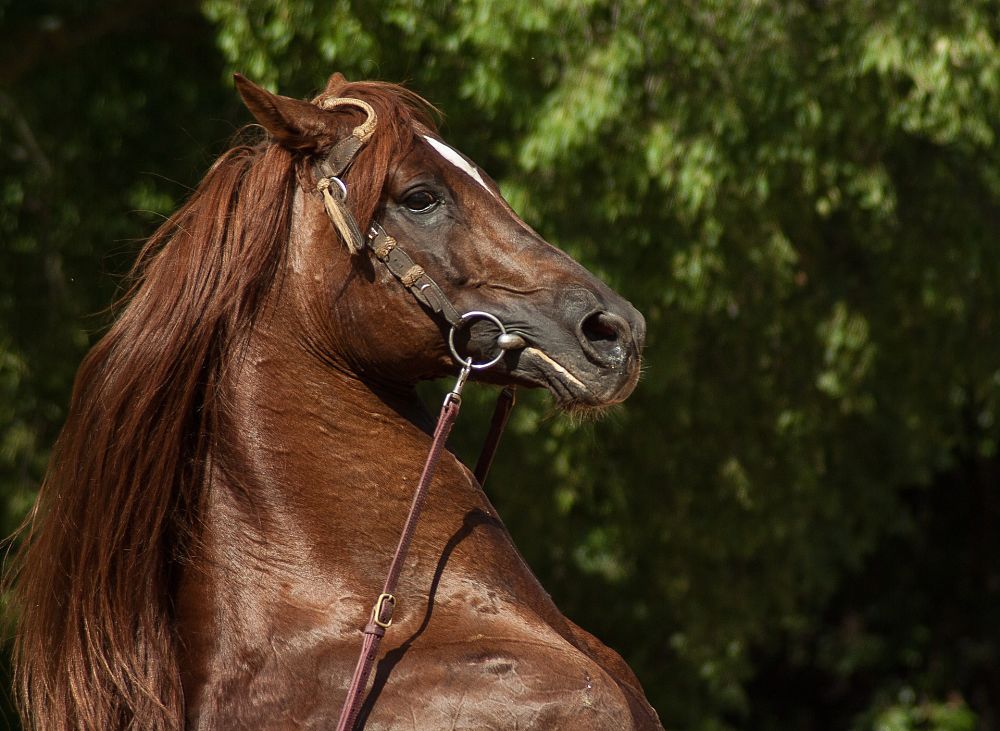
- The horse family includes zebras and donkeys
- Their next closest relatives are rhinos and tapirs
- In the year 1900 approximately 130,000 horses were working in Manhattan
- During the war in Afghanistan U.S. special forces road horses to get through the difficult terrain
- Horses have a group of special ligaments called the "stay apparatus" that allow them to sleep standing up
- Horses were domesticated about 6,000 years ago
- A pony is a small horse, a foal is a baby horse, a colt is a male baby horse and a filly is a female baby horse
Scientific Classification:
| Horse - animalstats - | |||
|---|---|---|---|
| MALE | FEMALE | YOUNG | SOCIAL UNIT |
| stallion | mare | foal | group |
| GROUP | HOME | HABITAT | FAVORITE FOOD |
| herd | worldwide | pasture | grass |
| TOPSPEED | ENDANGERED | AVG WEIGHT | AVG HEIGHT |
| 42 mph | no | 1,000 pounds | 60 inches |
| ESTRUS | GESTATION | BIRTH HEIGHT | BIRTHWEIGHT |
| 1 x year | 11-12 months | 28 inches | 100 pounds |
| RAISED BY | # OF YOUNG | AT BIRTH | CAN RUN |
| mother | 1 | eyes open | 1/2 hour |
| WEANED | INDEPENDENT | MATURITY | LIFESPAN |
| 8 months | 1 year | 3-5 years | 20-35 years |
see more animal extreme closeups
Recent Articles
-
African Animals - Animal Facts Encyclopedia
Oct 11, 16 10:27 PM
African Animals facts photos and videos..Africa is a wonderland for animal lovers, and a schoolroom for anyone who wants to learn about nature, beauty and the rhythm of life -
Baboon Facts - Animal Facts Encyclopedia
Oct 11, 16 10:26 PM
Baboon facts, photos, videos and information - Baboons are very distinctive looking monkeys with long, dog-like snouts and close set eyes. -
Great Apes Facts - Animal Facts Encyclopedia
Oct 11, 16 10:25 PM
Great apes facts, photos and videos..Human beings did not evolve from chimpanzees, modern chimps and gorillas do not appear in the fossil records until much more recently than homo sapiens..




















